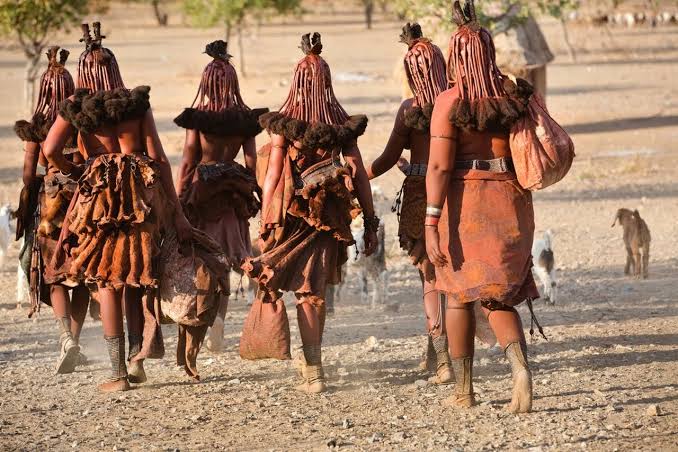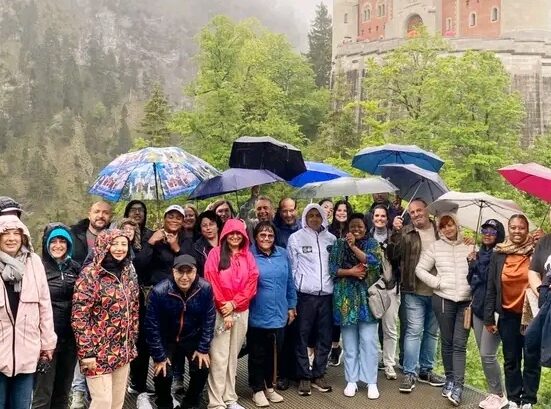The arrival of Bantu-speaking peoples in Namibia marks one of the most significant shifts in the region’s demographic and cultural landscape. This migration, which occurred around the 14th century, not only reshaped the ethnic composition of Namibia but also influenced its agricultural, social, and linguistic development. The story of the Bantu peoples in Namibia is a rich and complex one, intertwining with the history of the indigenous groups already living in the area, as well as with the broader patterns of migration and cultural exchange that occurred throughout Southern Africa.
In this article, we will explore the historical context surrounding the arrival of Bantu-speaking peoples in Namibia, the impact of this migration on the indigenous cultures of the region, and the lasting effects it has had on Namibia’s identity, culture, and development.
1. The Bantu Migration: A Broad Overview
The Bantu migration refers to a series of migrations of Bantu-speaking peoples from their original homeland in West and Central Africa to other parts of sub-Saharan Africa. This movement, which took place over many centuries, began around 1000 BCE and continued into the 16th century. Bantu-speaking peoples spread southward and eastward, carrying with them not only their language but also their knowledge of agriculture, ironworking, and social organization.
By the time Bantu-speaking groups reached southern Africa, the migration had already caused profound changes across Central and Eastern Africa. The arrival of these groups in Namibia, around the 14th century, marked a pivotal moment in the history of the region.
2. The Arrival of Bantu Peoples in Namibia
Bantu-speaking peoples began to settle in Namibia primarily during the 14th century, though there were earlier contacts with different parts of Southern Africa. Before the arrival of the Bantu migrants, Namibia was primarily inhabited by indigenous groups, such as the Khoisan peoples, who had developed unique ways of life suited to the desert and savannah environments.
The Bantu migration into Namibia was likely spurred by a combination of factors, including population pressures, environmental changes, and the search for new agricultural land. The Bantu-speaking migrants brought with them advanced agricultural practices, which allowed them to cultivate crops such as millet, maize, and sorghum. Their knowledge of ironworking also enabled them to create more sophisticated tools, such as plows, which helped them thrive in their new environment.
By the 14th century, Bantu-speaking groups, including the ancestors of the Herero, Owambo, and Zulu peoples, began to settle in Namibia’s northern and central regions, particularly around the fertile areas of the Zambezi River and the Kavango region. These groups introduced new technologies, languages, and social structures that profoundly impacted the indigenous peoples they encountered.
3. Cultural and Social Shifts in Namibia
The arrival of Bantu-speaking peoples in Namibia brought about significant cultural changes, particularly in the realms of agriculture, social organization, and language. The Khoisan peoples, who had inhabited Namibia for thousands of years, had traditionally relied on hunting, gathering, and pastoralism as their primary means of sustenance. The Bantu migration, however, introduced new forms of subsistence farming that allowed for the cultivation of crops in larger, more organized agricultural communities.
Agricultural Advancements
Bantu-speaking migrants brought with them advanced agricultural techniques, such as the use of iron tools for farming and the cultivation of staple crops like millet, maize, and sorghum. These crops were well-suited to the Namibian environment and provided a more stable food source than the traditional hunting and gathering methods of the Khoisan. The introduction of farming also led to the development of settled communities, as opposed to the nomadic lifestyle of the indigenous peoples.
The Bantu migration played a crucial role in transforming Namibia’s agricultural landscape. The introduction of new crops and farming practices led to increased food production, which in turn allowed for the growth of larger communities. Over time, the agricultural knowledge of the Bantu peoples became deeply embedded in the culture of Namibia, and farming became a cornerstone of the country’s economy.
Social Organization and Settlements
Bantu-speaking groups introduced a more complex social organization compared to the small, mobile bands of the Khoisan peoples. The Bantu people established villages and chiefdoms, with hierarchies and systems of governance based on kinship and clan affiliations. This social structure had a lasting impact on the political landscape of Namibia, influencing the development of modern Namibian society.
The Bantu also brought with them communal practices that emphasized collective responsibility, including shared agricultural labor, social rituals, and the importance of extended family networks. This communal way of life became a significant aspect of Namibian culture, particularly among the Herero, Owambo, and other Bantu-descended groups.
Language and Cultural Influence
One of the most lasting impacts of the Bantu migration was the introduction of new languages and cultural practices. Bantu-speaking peoples brought with them a variety of languages, which over time became the dominant languages in many parts of Namibia. The most prominent of these languages today are the Herero and Oshiwambo languages, both of which belong to the Bantu language family.
The influence of Bantu cultures can be seen in the traditional music, dance, and art of Namibia, as well as in the ways in which the country’s communities are organized. Many of Namibia’s ethnic groups still practice the customs and rituals that were introduced during the 14th-century migration, including rites of passage, traditional storytelling, and ceremonies associated with agriculture and the seasons.
4. Interactions with Indigenous Groups
The arrival of Bantu-speaking peoples in Namibia did not occur in isolation, and it was not without its challenges. The Bantu migrants encountered indigenous groups such as the Khoisan, who had already developed sophisticated cultures and ways of life in the region. There were undoubtedly both peaceful exchanges and conflicts as these groups interacted, with the Khoisan people sometimes assimilating aspects of Bantu culture, while others resisted encroachment.
Over time, however, the Bantu-speaking migrants established themselves as the dominant cultural and social force in much of Namibia. Despite this, the Khoisan peoples retained many of their traditions, languages, and ways of life, and their descendants continue to be an important part of Namibia’s cultural fabric today.
5. The Lasting Legacy of the 14th-Century Migration
The arrival of Bantu-speaking peoples in Namibia during the 14th century was a pivotal moment in the country’s history. This migration not only introduced new agricultural practices, technologies, and social structures but also laid the foundation for the development of Namibia’s modern-day ethnic and linguistic composition.
The Herero, Owambo, and other Bantu-descended groups continue to play a central role in Namibia’s cultural, political, and economic life. Today, Bantu-speaking communities in Namibia represent the largest ethnic groups in the country, with their languages spoken by the majority of the population. Their agricultural practices, social organization, and cultural traditions remain integral to Namibia’s identity.
The arrival of the Bantu peoples was a defining moment that shaped Namibia’s landscape, culture, and history in profound ways. As the country continues to evolve, it is essential to recognize the contributions of the various peoples who have shaped its identity. From the Khoisan to the Bantu-speaking migrants, Namibia’s history is a tapestry woven with diverse cultures, languages, and traditions, each playing a vital role in the nation’s rich and complex heritage.
The Bantu peoples’ arrival in Namibia during the 14th century marked the beginning of a transformative era in the country’s history. It reshaped the country’s cultural landscape, from agriculture and social organization to language and traditions. The influence of the Bantu migration remains evident in modern Namibia, as Bantu-speaking groups continue to play a central role in the nation’s social, political, and economic spheres. The legacy of this migration is not only one of agricultural development and linguistic change but also one of cultural exchange and adaptation. The arrival of the Bantu peoples in Namibia was a critical moment in shaping the country’s identity, and their contributions continue to resonate today.
Join 'Namibia Today' WhatsApp Channel
Get the breaking news in Namibia — direct to your WhatsApp.
CLICK HERE TO JOIN












